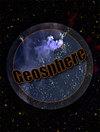锆石年龄谱量化岩浆演化
IF 1.7
3区 地球科学
Q3 GEOSCIENCES, MULTIDISCIPLINARY
引用次数: 0
摘要
在过去的几十年里,U-Th-Pb锆石地质年代学在灵敏度、空间选择性和仪器精度方面的分析能力取得了巨大进步。随着锆石预处理的改进以减轻Pb损失的影响,这些进步导致U-Th-Pb测年成为最广泛使用的地质年代测定仪。与此同时,越来越明显的是,现代分析技术可以解决仪器不确定性之外的锆石年龄分散问题,并且这种分散不能归因于Pb的损失或继承。因此,迫切需要完善统计程序,以显示和解释火山岩和深成岩的分散年龄数据,传统上,锆石年龄分别被分配给喷发和岩浆侵位的准瞬时事件。解析锆石年龄谱的能力通常在103–106年的时间范围内,也为监测岩浆过程提供了新的机会,因为锆石结晶与其主熔体的温度和成分直接相关。至少对于典型的亚碱性熔体成分,这种关系通过多次锆石饱和实验得到了很好的校准,尽管从中得出的绝对饱和温度可以变化几十度。此外,锆石饱和测温法得到了锆石微量元素和同位素清单的支持,它高保真地记录了熔体的热化学和成分演变。在这里,我们首先回顾了真实锆石年龄谱的特性,这些特性是由相对于分析不确定性的统计稳健的过度分散定义的。其次,我们评估了现有的模型,并提出了新的模型,旨在将锆石年龄谱的性质定量地转化为控制地壳岩浆体寿命和热演化的参数,如岩浆补给通量和持续时间。这些不断发展的方法旨在捕捉动态地壳岩浆系统中影响锆石形成和扩散的所有过程,有可能促进对岩浆作用的更好理解,从而对火山灾害评估、地热能使用和矿床起源产生影响。本文章由计算机程序翻译,如有差异,请以英文原文为准。
Zircon age spectra to quantify magma evolution
The past decades have seen tremendous advances in analytical capabilities regarding the sensitivity, spatial selectivity, and instrumental precision of U-Th-Pb zircon geochronology. Along with improved zircon pretreatment to mitigate the effects of Pb-loss, these advancements have resulted in the emergence of U-Th-Pb dating as the most widely used geochronometer. In parallel, it became increasingly obvious that modern analytical techniques can resolve zircon age dispersal beyond instrumental uncertainties and that this dispersion cannot be attributed to Pb-loss or inheritance. Hence, there is a pressing need to refine statistical procedures for displaying and interpreting dispersed age data from volcanic and plutonic rocks, where zircon ages were traditionally assigned to the quasi-instantaneous events of eruption and magma emplacement, respectively. The ability to resolve zircon age spectra, which often range over timescales of 103–106 years, also offers new opportunities to monitor magmatic processes, because zircon crystallization directly relates to the temperature and composition of its host melt. This relation is, at least for typical subalkaline melt compositions, well calibrated by multiple zircon saturation experiments, although absolute saturation temperatures derived from them can vary by tens of degrees. Moreover, zircon saturation thermometry is supported by the trace element and isotopic inventory of zircon, which records the thermochemical and compositional evolution of melts at high fidelity. Here, we first review the properties of true zircon age spectra that are defined by a statistically robust overdispersion relative to analytical uncertainties. Secondly, we evaluate existing models and present new models that aim to quantitatively translate the properties of zircon age spectra into parameters controlling the longevity and thermal evolution of crustal magma bodies such as magma recharge flux and duration. These developing approaches, which aspire to capture all processes that affect the formation and dispersal of zircon in dynamic crustal magma systems, have the potential to foster an improved understanding of magmatism with implications for volcanic hazard assessment, geothermal energy uses, and the origins of ore deposits.
求助全文
通过发布文献求助,成功后即可免费获取论文全文。
去求助
来源期刊

Geosphere
地学-地球科学综合
CiteScore
4.40
自引率
12.00%
发文量
71
审稿时长
6-12 weeks
期刊介绍:
Geosphere is GSA''s ambitious, online-only publication that addresses the growing need for timely publication of research results, data, software, and educational developments in ways that cannot be addressed by traditional formats. The journal''s rigorously peer-reviewed, high-quality research papers target an international audience in all geoscience fields. Its innovative format encourages extensive use of color, animations, interactivity, and oversize figures (maps, cross sections, etc.), and provides easy access to resources such as GIS databases, data archives, and modeling results. Geosphere''s broad scope and variety of contributions is a refreshing addition to traditional journals.
 求助内容:
求助内容: 应助结果提醒方式:
应助结果提醒方式:


